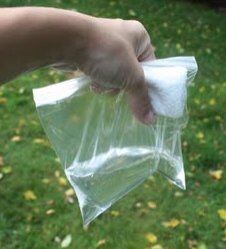Esperimenti scientifici per bambini – Bombe frizzanti
Science experiments for children – Bubble bombs prepared with baking soda and vinegar, for children of kindergarten and primary school.
____________________
Science experiments for children – Bubble bombs
What do you need?
water,
a spoon,
paper towels,
plastic food bags intact (those with zipper)
vinegar
baking soda.
_______________________
Science experiments for children – Bubble bombs
What to do?
It is very important to use bags perfectly intact, so it’s best to test them before the experiment by pouring water on them, closing the zip and flip them.
Wrap into a piece of paper towel 2 tablespoons of baking soda, making a small package.
Pour into plastic bag half cup of vinegar, and a quarter cup of warm water.
Now you need some care and ability, to be able to bring down the package of paper in vinegar with the bag closed, before it develops the effervescence.
You can do so for example:
http://superheroesandprincesses.blogspot.com/
Release the package, shake, then place the “bomb” on the lawn (or in bathtub) and observe. The bag will begin to swell and then will explode.
___________________
Science experiments for children – Bubble bombs
What happens?
When the vinegar (which is an acid) reacts with the baking soda (which is a base), it forms carbon dioxide.
If you make a cake or bread, you do experiments like this without knowing it.
If the recipe contains baking soda, but no yeast, there will probably also an ingredient acid (lemon, yogurt, orange juice, etc …).
Some recipes then require dried yeast, which is nothing more that a mixture of sodium bicarbonate with an acid ingredient (tartaric acid for example).
__________________
Science experiments for children – Bubble bombs
Other links
http://superheroesandprincesses.blogspot.com/
http://www.apple-cider-vinegar-benefits.com/baking-soda-and-vinegar.html
http://www.flashbangscience.co.uk/funstuff/experiments/bubbleb.htm
